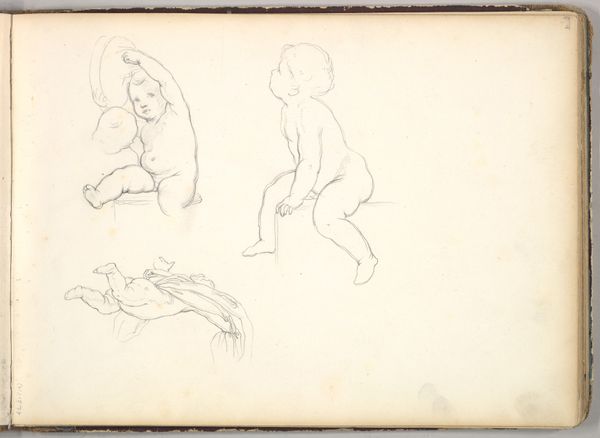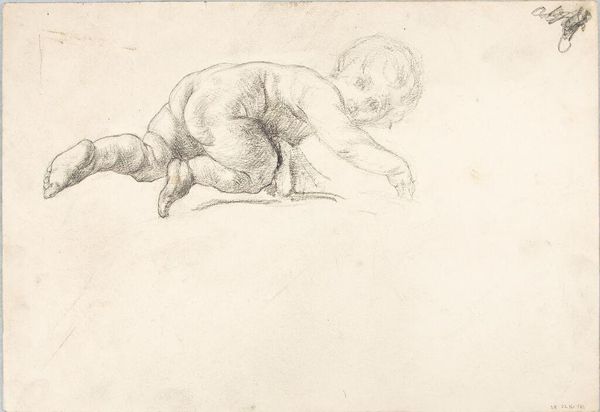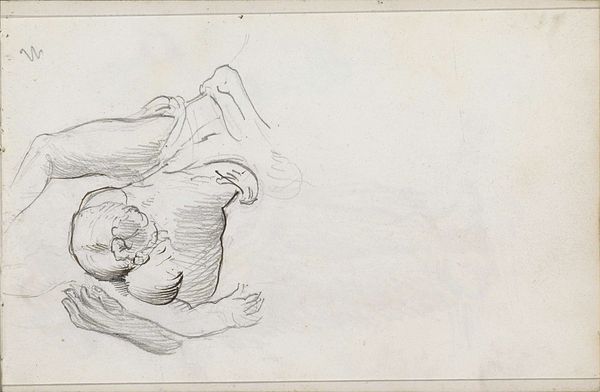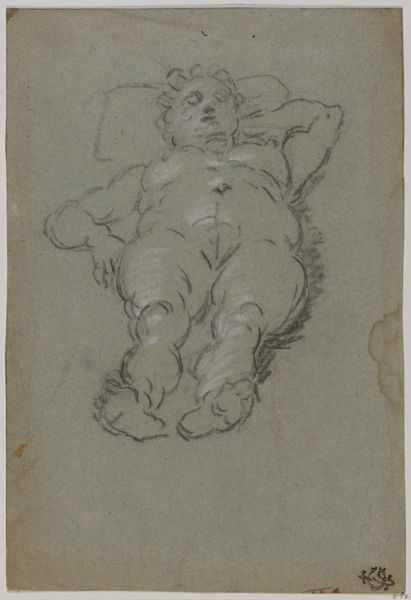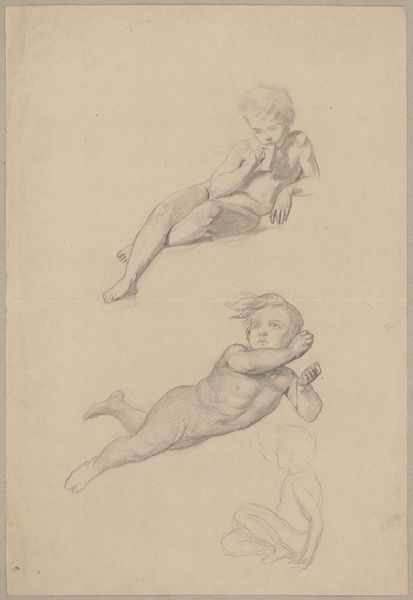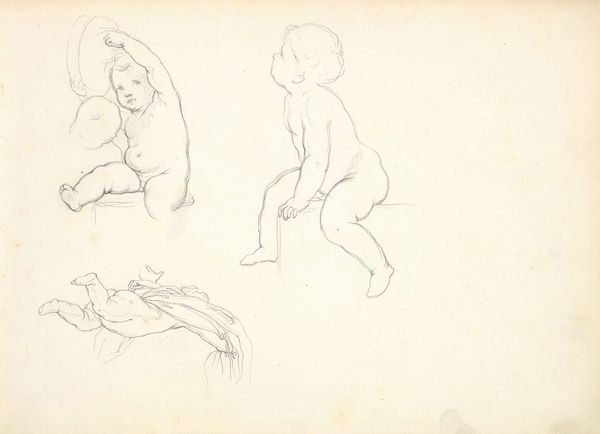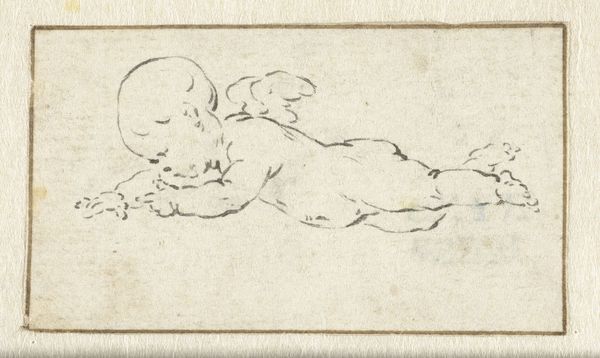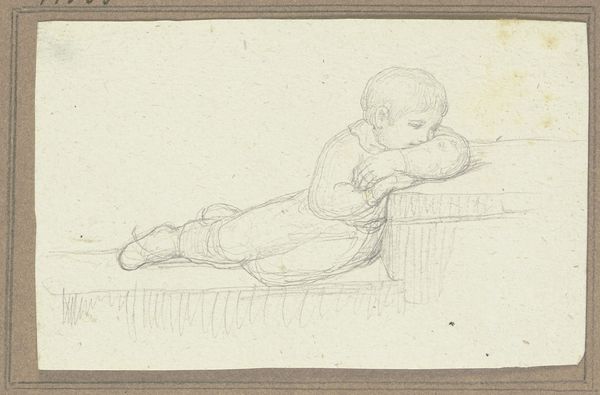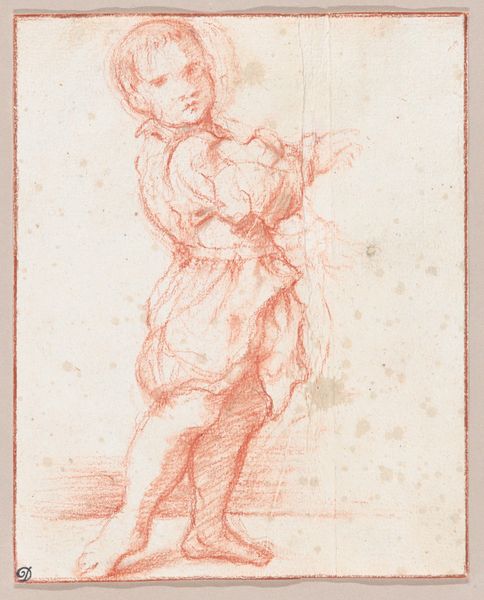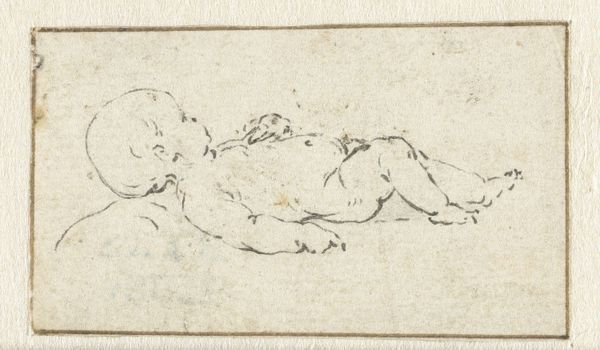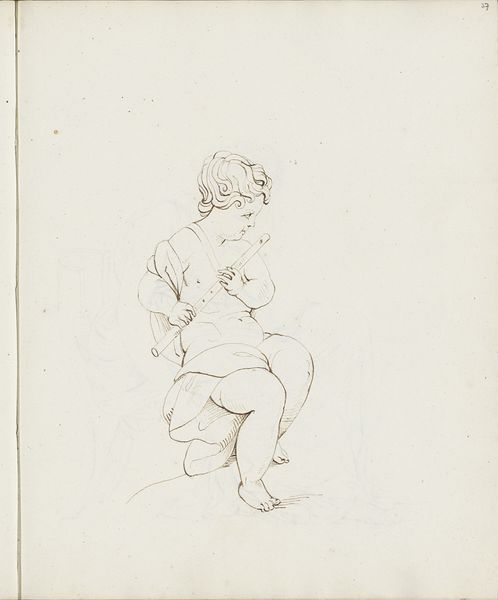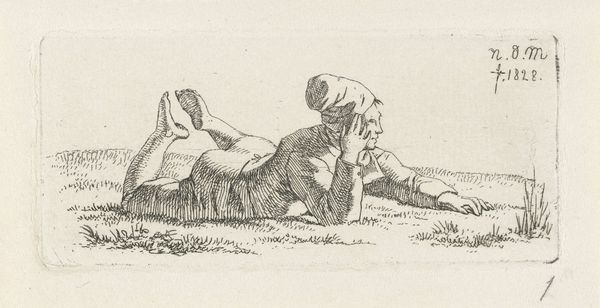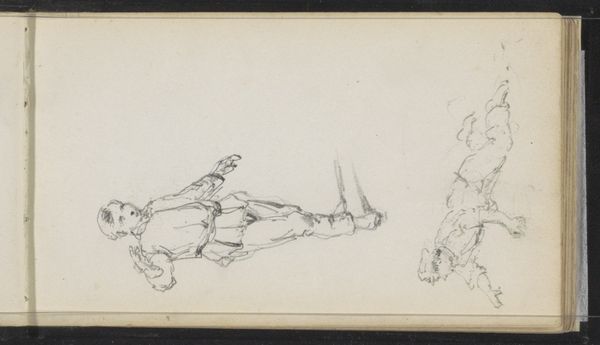
drawing, pencil
#
portrait
#
drawing
#
figuration
#
pencil
#
academic-art
Dimensions: 44 mm (height) x 90 mm (width) (bladmaal)
Curator: I’m struck by the innocence captured in this simple pencil drawing, ‘En kravlende, nøgen dreng’—A Crawling, Naked Boy—by Jens Juel, likely created sometime between 1743 and 1809. The artwork resides here at the SMK, Statens Museum for Kunst. Editor: It has such an ephemeral quality to it, almost like a fleeting thought sketched on paper. And that nudity, while perhaps commonplace then, reads differently through today’s lens. There’s vulnerability here, and an immediate discussion to be had about children's representation. Curator: Indeed. Juel, celebrated as a leading portraitist of the Danish Golden Age, employs an academic art style to render this small child. Nakedness as an artistic theme recalls classical antiquity; there are symbolic continuities with idealized boyhoods in Greco-Roman statuary. Editor: But placing the artwork in the context of Juel's period also asks questions about societal power. I wonder, who was this child? What class? Who determined that their image be sketched? Such details give insight into the status of families—the children as heirs and emblems—within aristocratic societies. Curator: One interpretation suggests he may have been prepping sketches in preparation for a more polished work. This initial concept seems less to enshrine this particular child and more to immortalize this child-like, angelic stage, that of infantile discovery. Editor: The gesture with the outreached arm underscores that interpretation: a tentative first gesture outward towards the unknown world, but it also suggests the child's active participation as an agent in space and society, however constrained, in both material and creative life. What a fascinating tension—a moment in between freedom and restriction. Curator: The minimalist approach enhances the image's overall charm. A glimpse into childhood that invites us to reflect upon human origins. Editor: An invitation, perhaps, to think not just about the origins of personhood but about personhood and how cultural forces like portraiture shape—even exploit—the social existence and identity of vulnerable groups such as children.
Comments
No comments
Be the first to comment and join the conversation on the ultimate creative platform.
